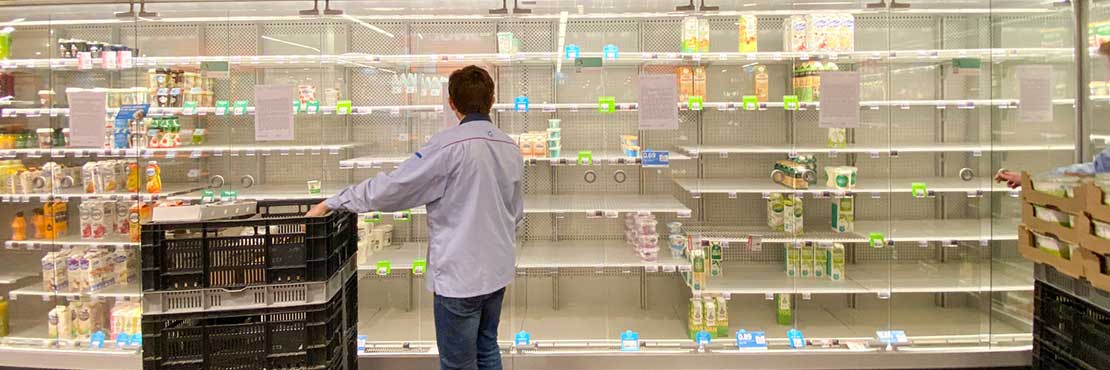Email, App or SMS – what’s the best channel for internal communications (especially with casual workers)?
According to a 2018 research, there are a total of 2.6 million casual workers in Australia, accounting for 20.6% of the total workforce. Hospitality, retail and healthcare services are the top 3 industries to hire casual workers; combined they employ close to half of all casual workers in Australia. Construction, manufacturing, education, transport & warehousing, as well as administrative and support services all employed more than 100,000 casual workers respectively (source).
With the recent COVID-19 outbreak, supermarket giants Coles and Woolworths announced they will hire a combined of 25,000 extra workers, mostly casual positions, to serve the increased demand of their services.
With such a large number of casual positions, employers face the question of how to effectively communicate with their casual workers.
Email – three quarters of them are unopened
While email seems to be the default channel for internal communications, when it comes to casual workers it might not be the case. Given that most of these workers do not have a company email, not only will the company risk sending confidential information to an email address with a general domain, it also means that they will have to fight for the employee’s attention amongst all other emails they receive daily.
In times of crisis this can prove to be even more problematic. A recent survey revealed that the weekly volumes of email campaigns rose from 3,600 to 40,000 between mid February to mid March during the COVID-19 pandemic. Yet this is precisely the time where you will need the full attention of your employees, whether they are casual or not. From business continuity plan testing to changes on policies and procedures, employers need to keep their staff informed and ensure everyone understands what is happening and what changes they need to follow.
For hospitality, retail and healthcare services, it is often the frontline staff that are casual workers, making it of paramount importance for employers to be able to communicate any changes and updates to them in a timely manner so that new procedures are carried out.
According to Campaign Monitor’s 2020 global report, Australia has an average email open rate of 18.7%, slightly higher than the global average of 17.8%. In times of the pandemic, the average open rate of email rose to 24% (source); even though that’s a strong email engagement, you are still risking having more than three quarters of your recipients not reading the email.
Imagine three quarters of your casual staff turning up to work without knowing the new policies or procedures you have imposed according to the new government regulations; the results can be very damaging.
App – the complexity of installation and opt-in
Some companies turn to internal communications Apps to communicate with their staff members, yet it’s not without challenges. For companies who invest in their own app, the cost associated with creating, running and maintaining an app that works with all smart phone models and operating systems can be prohibitive.
Depending on how the app operates, many companies struggle to find ways to push out notifications only to a segmented group of employees. This makes having targeted communications like information for specific locations and outlets difficult. You will also risk staff becoming immune to your messages if they feel they are not always related to them.
It might be easier to persuade your full time employees to download yet another app on their phone; for casual workers it might be more challenging. Even if they did, there’s still the issue of opting in to receive the push notifications from your app.
Research from Accengage revealed that the average opt-in rate for push notifications in Oceania is 66.4%, with iOS accounted for 43.3% and Android accounted for 89.4%. That’s largely due to the fact that Android systems automatically enable push notifications while iOS users have to actively consent to push notifications. According to statcounter, as of March 2020, iOS accounted for 53.98% of the mobile operating system market share, and Android for 45.74% (source). Even though the opt-in rate is higher compared to the open rate of email, it’s still not an ideal number, especially if it is time sensitive messages or in times of crisis.
SMS – 94% open rate, 90% read within 3 minutes
SMS enjoys the benefit of being the universal default app to all mobile phones, regardless of different models or operating systems, which means you can be assured you’ll be able to reach all your employees.
It has a 94% open rate, topping both email and push notifications; additionally, 90% of SMS are read within 3 minutes, making it the ideal channel when communicating for emergency or time critical messages (source).
Many SMS platforms enable users to upload contacts from various file formats, import contacts from other CRM and create different contact groups, making it much easier to communicate to a targeted segment of employees.
With rich messaging functionality like Messaging Studio, you can even bypass the text and character limitation of SMS by sending SMS Landing Pages or attaching a PDF to the text messages to communicate more detailed information.
With SMS Landing Pages you’d be able to create a mobile first web page with images, brand logo, colours, personalise content and call-to-action buttons to direct the recipients to take the required further actions.
The ability to attach a PDF file to the SMS message means employers can maintain the formality of an official document and communicate detailed and complicated messages, while still benefiting from the fast and wide reach of SMS.
If you need help with communicating to your casual employees, please get in touch with 1300 764 946 or email [email protected]; or have a look at how to manage remote workers especially in times of crisis like now..

